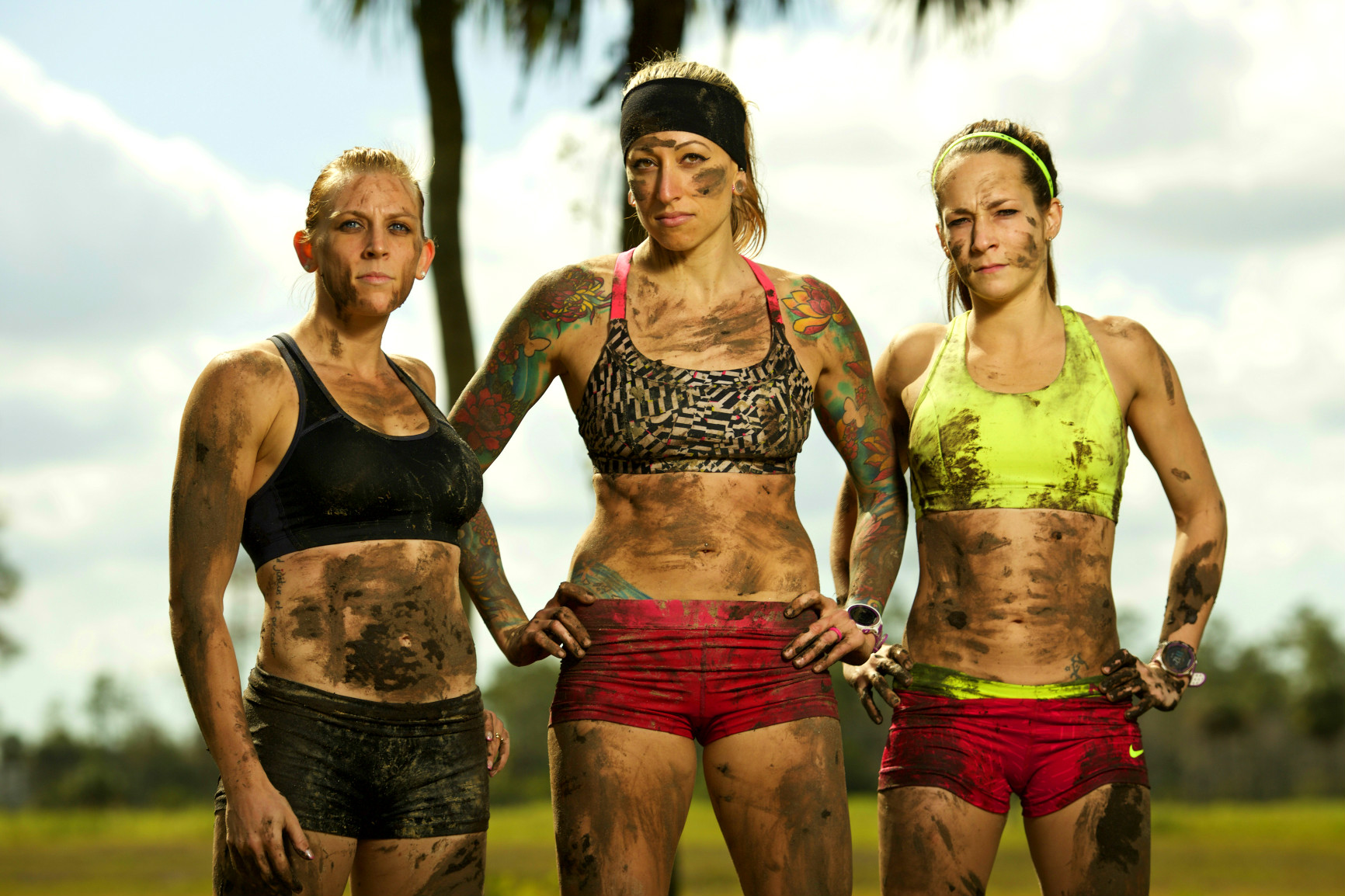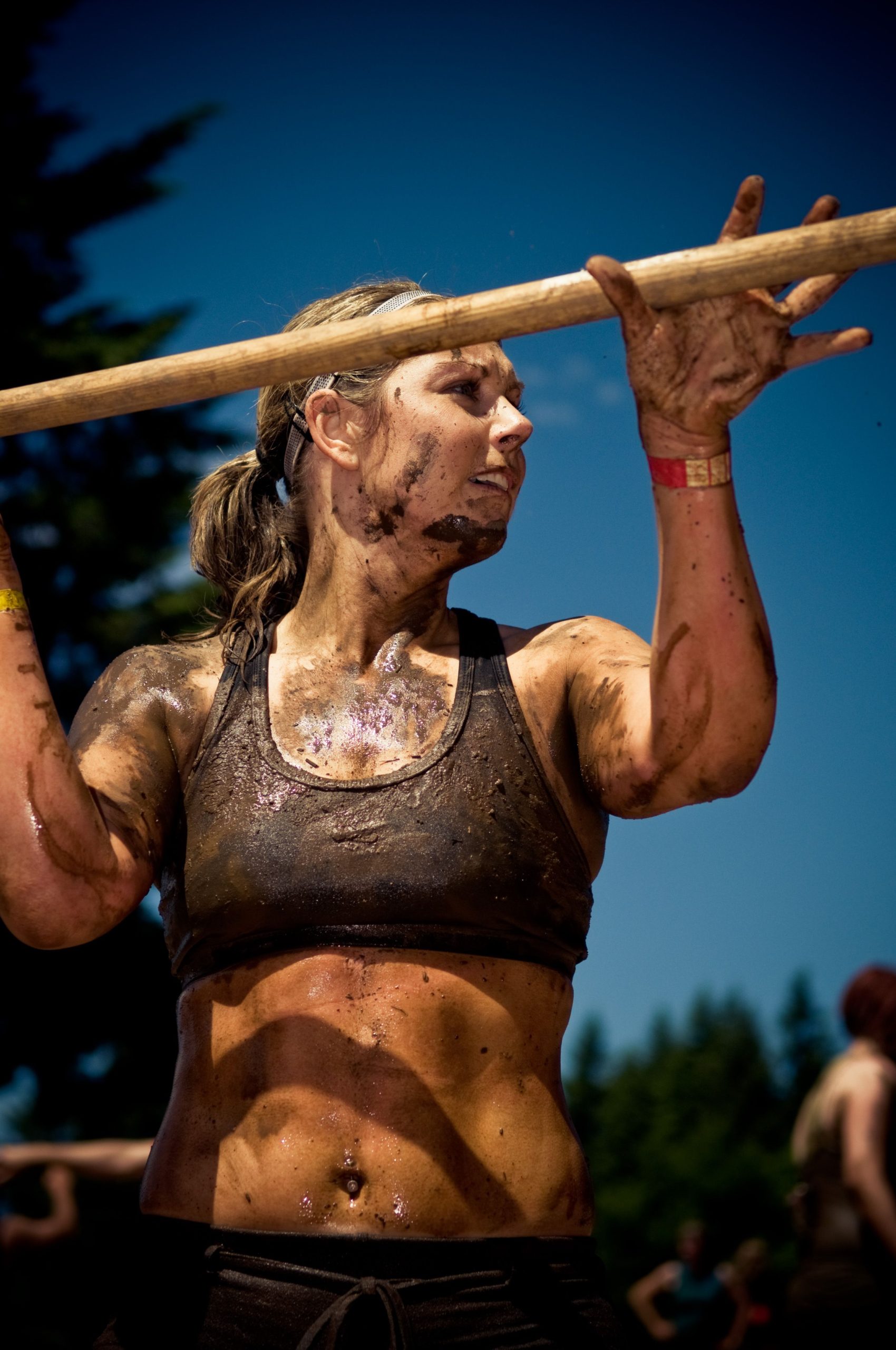
Tough Mudder is an endurance event series in which participants attempt 10-12 mile long military-style obstacle courses. Designed by British Special Forces to test mental as well as physical strength, obstacles often play on common human fears, such as fire, water, electricity and heights. The organizers encourage teamwork, and many obstacles are designed to be very difficult to complete alone. The events are untimed, and an average 78% of entrants successfully complete the course. The first Tough Mudder challenge was held in the United States in 2010. In 2012, roughly 500,000 people worldwide participated in 35 events.
Tough Mudder was co-founded in 2010 by Will Dean and Guy Livingstone, both British citizens living in New York. Dean had developed the idea for the company while studying at Harvard Business School, where the concept was a semifinalist in the school’s annual business plan competition. It has been widely noted that Will Dean took the idea from Billy Wilson and his Tough Guy races. They held the first Tough Mudder event on May 2, 2010 at Bear Creek Ski Resort near Allentown, PA. Promoted exclusively through Facebook advertising and word of mouth, the event drew more than 4,500 participants.
Two additional 2010 events were held in Northern California and New Jersey. The next year, 14 events were held throughout the United States. In 2012, 35 events were held in a four countries. Tough Mudder, as a company, is worth $70 million. On May 2, 2013, Tough Mudder announced that it has reached one million total registrations since it started in 2010. For 2014, Tough Mudder scheduled 58 events in the U.S., U.K., Australia, Canada, and Germany.
The typical Tough Mudder course is 10–12 miles long and features 20–25 obstacles. Terrain type varies from course to course; natural features of the land at each venue are incorporated into the course design. Past venues have included ranches, motocross tracks, and ski resorts. The list of obstacles also varies from course to course, though there are several “signature” obstacles at almost every event, including:

Arctic Enema: Participants plunge into a dumpster filled with ice water, dunk underneath a plank that crosses the dumpster, and pull themselves out on other side.
Electroshock Therapy: Live wires hang over a field of mud that participants cross through.
Funky Monkey: A set of incline and decline monkey bars over a pit of cold water. The bars are slicked with a mixture of butter and mud.
Everest: Participants run up a quarter pipe slicked with mud and grease.
Electric eel: Participants slide on their bellies through mud frigid water or, even worse, a layer of ice while electric shocks hang overhead.
Berlin wall: An 8-12 foot wall that participants scale.
Boa Constrictor: Participants pass though narrow pipes and mud.
Walk The Plank: 15+ foot high jump from on top of a platform into freezing water.
In 2012, Tough Mudder founded an off-site “Obstacle Innovation Lab” in New Jersey, where the company designs and tests new obstacles.
World’s Toughest Mudder is an invitation-only 24-hour challenge. Unlike other Tough Mudder events, World’s Toughest Mudder is a competition, with the top-ranking man, woman, and team receiving prize money.
To qualify for World’s Toughest Mudder, participants must finish a standard Tough Mudder event in the top 5% of self-reported times. The competition itself consists of a 10-mile looped course, which participants continuously run through for 24 hours. The participant who completes the most laps is declared the winner. The winners receive the title of “World’s Toughest Mudder” and a $15,000 prize.
World’s Toughest Mudder was first held in 2011 at Raceway Park in New Jersey. Junyong Pak claimed first place, and Juliana Sproles was the first female finisher. In 2012, Pak successfully defended his title. Amelia Boone was the first female finisher and the second finisher overall. The team competition was introduced for the first time in 2012; a team from Pennsylvania calling themselves “Nine Inch Males” took first place. There were over 1,200 competitors in 2012.
At the April 20, 2013, Tough Mudder Mid-Atlantic event in Gerrardstown, West Virginia, a 28 year-old participant, Avishek Sengupta, died following an incident on the “Walk the Plank” obstacle. The local police department ruled the death an accident. This was the first fatality in Tough Mudder’s history.
Tough Mudder supports a military charity in each territory it holds events, and encourages participants to raise money to aid veterans. Current charities supported include Wounded Warrior Project (in the United States), Wounded Warriors Canada, Help for Heroes (in the United Kingdom), and Legacy (in Australia). To date Tough Mudder participants have donated more than $6 million for the US Wounded Warrior Project.

Tough Mudder has partnerships with many notable companies; US partners include Under Armour, Degree, Bic, Wheaties, Dos Equis, Advil, Clif Bar, and CamelBak. Additional international partners include Samsung (in Canada); Strongbow (in the UK); USN (in the UK and Australia); and Solo, Holden, and Victoria Bitter (in Australia).
A new study aims to point out just how many injuries are occurring at these races — and how unique the injuries are. “The volume and severity of injuries in the Tough Mudder race we studied was unusually high, possibly leading to some permanent disabilities,” lead study author Marna Rayl Greenberg, DO MPH, said in a statement. “The 1.5 million people who are predicted to enter obstacle races like this in the next year should be well aware of the risks they are taking.”
The study, published in Annals of Emergency Medicine, describes five patients injured at a two-day event who were treated at a local emergency department in Pennsylvania. There were 33 others who were injured and treated at the same hospital but were not included in the study.
One of the patients had burn marks and heart inflammation after receiving 13 electrical shocks. Another had fainted after multiple electrical shocks to the head. A third was unable to move his right side after seizure-like activity and was still experiencing problems with his right leg six months later. The fourth patient had face and head injuries from being struck by electrical cords, and the fifth was admitted to the hospital with rhabdomyolsis (in headlines these days for its association with CrossFit) and dehydration.
In West Virginia, a local hospital had to turn patients away after the injured participants from a Tough Mudder in the area overloaded its resources, CBS Baltimore reported.
Unlike with marathons, where the training enhances race-day performance and preparedness, obstacle races are nearly impossible to train for, the study authors write. There’s little one can do to “prevent injury in an event in which obstacles include having to jump off a 9-foot height or run through a ?eld of electrical wires (while the participant is wet and hot),” they write. “Training might not have prevented many of the injuries that occurred in this event.”
Today Tough Mudder is a national brand with over $20 million in revenue
Disclaimer
The Content is not intended to be a substitute for professional medical advice, diagnosis, or treatment. Always seek the advice of your physician or other qualified health provider with any questions you may have regarding a medical condition.